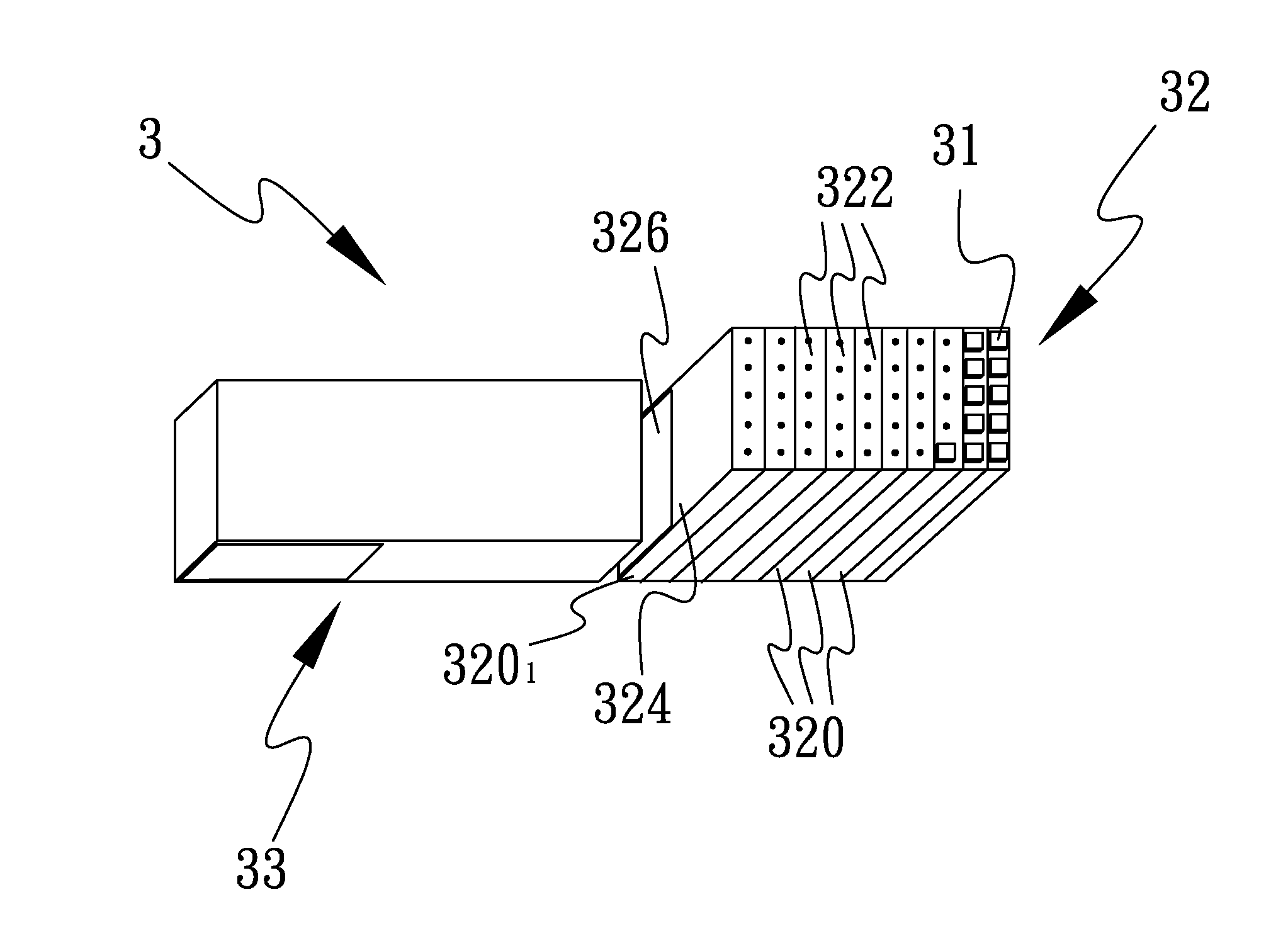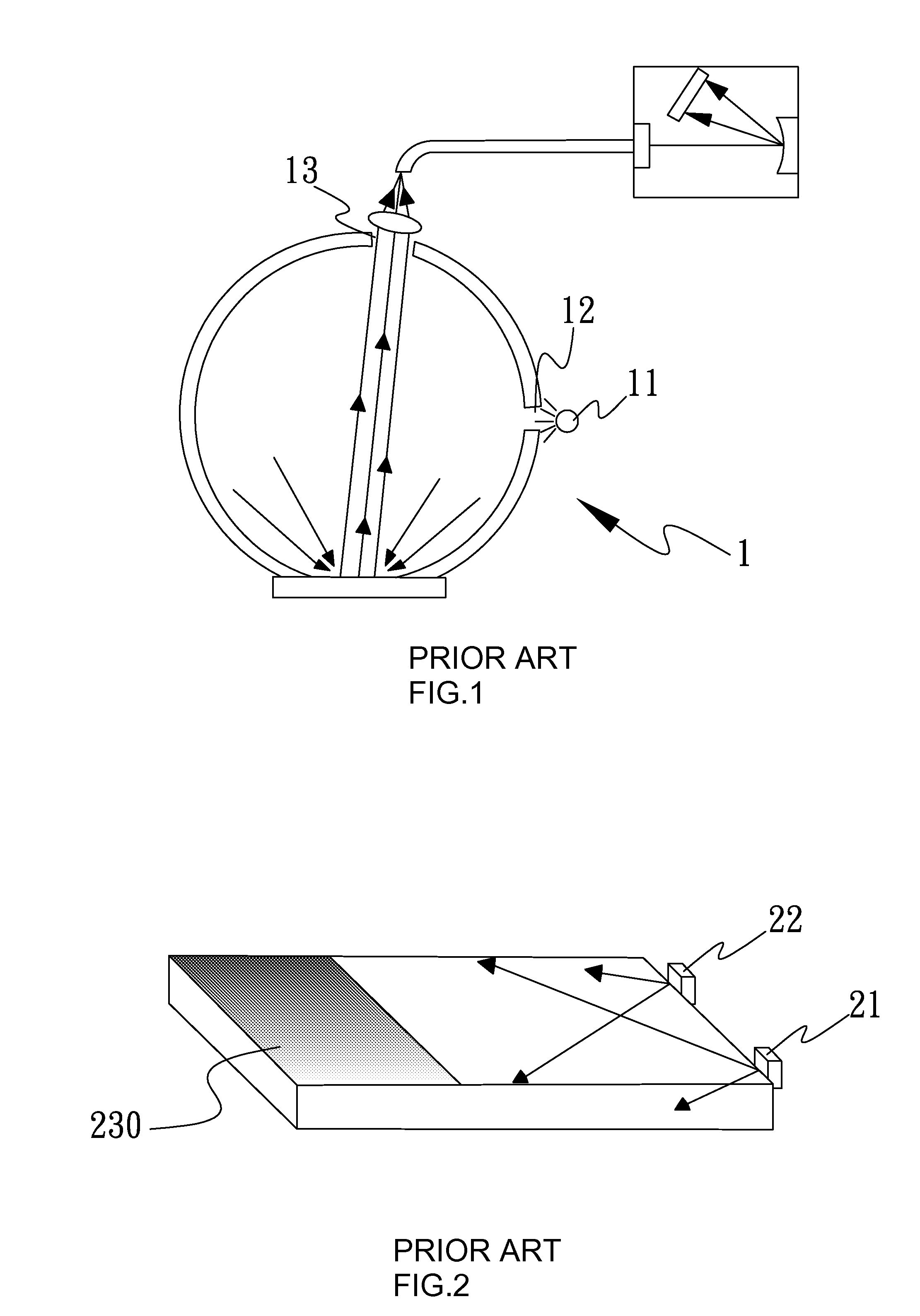Light source with uniform chromaticity and luminance and color sensor provided with same
a technology of light source and luminance, applied in the field of light source, can solve the problems of short lifespan, reduced illumination efficiency, non-ideal and non-economical light source, etc., and achieve the effect of facilitating implementation of intensity elevation
- Summary
- Abstract
- Description
- Claims
- Application Information
AI Technical Summary
Benefits of technology
Problems solved by technology
Method used
Image
Examples
Embodiment Construction
[0038]The aforementioned and other technical contents, aspects and effects in relation with the present invention can be clearly appreciated through the detailed descriptions concerning the preferred embodiments of the present invention in conjunction with the appended drawings.
[0039]In order to make the spectrum distribution qualified as a CIE standard illuminant, the invention applies multiple LED devices having different spectra, appropriately in conjunction with several narrow-band light sources with different central wavelengths and through a light mixing mechanism of light guide plates, to synthesize the “standard illuminant simulation light” that satisfies the CIE standard and serves as a light source useful for measurement of the chromaticity of an object. The measurement on the color of an object in accordance with the CIE 1931-(X, Y, Z) chromaticity system can be expressed as the following simple equation:
W=∫380780S·R· wdλ; W=X,Y,Z; w= x, y, z
[0040]In this equation, S indi...
PUM
 Login to View More
Login to View More Abstract
Description
Claims
Application Information
 Login to View More
Login to View More - R&D
- Intellectual Property
- Life Sciences
- Materials
- Tech Scout
- Unparalleled Data Quality
- Higher Quality Content
- 60% Fewer Hallucinations
Browse by: Latest US Patents, China's latest patents, Technical Efficacy Thesaurus, Application Domain, Technology Topic, Popular Technical Reports.
© 2025 PatSnap. All rights reserved.Legal|Privacy policy|Modern Slavery Act Transparency Statement|Sitemap|About US| Contact US: help@patsnap.com



